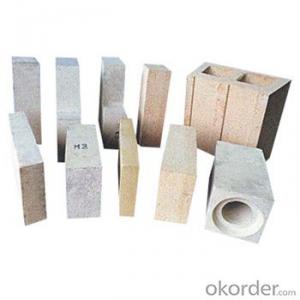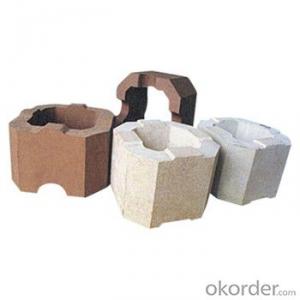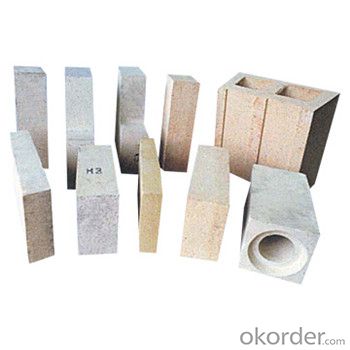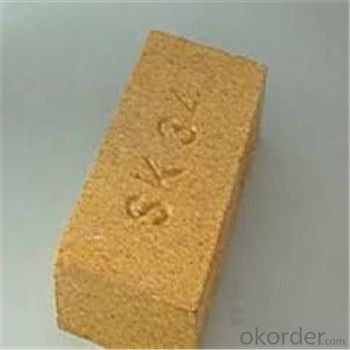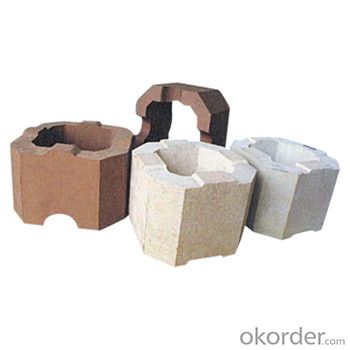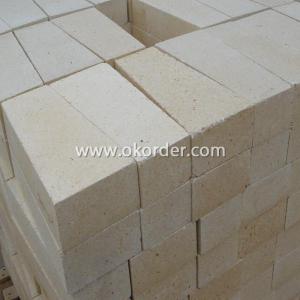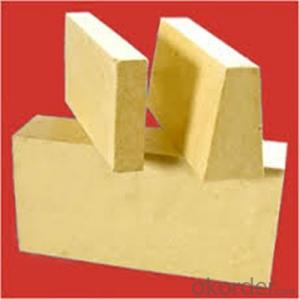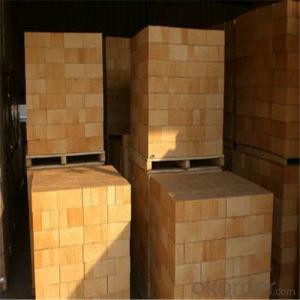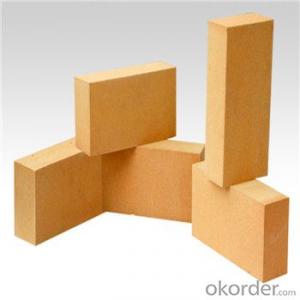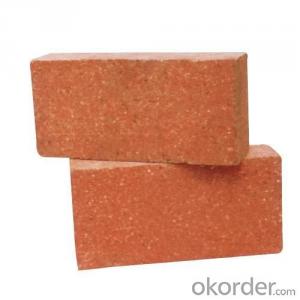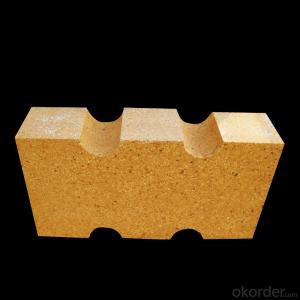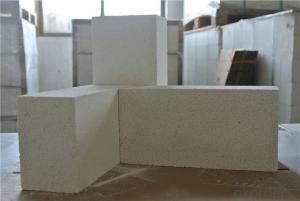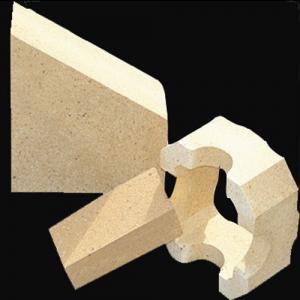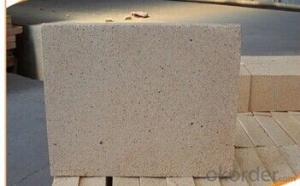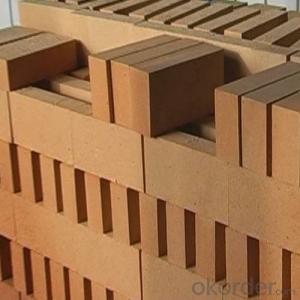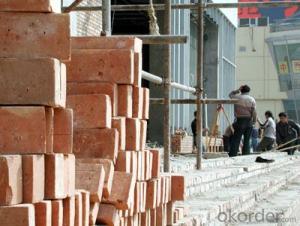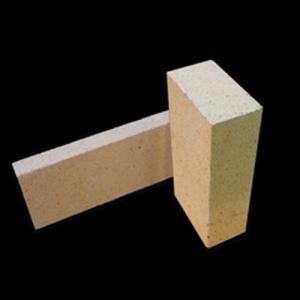Fireclay Brick - Lightweight Insulation
- Loading Port:
- China main port
- Payment Terms:
- TT OR LC
- Min Order Qty:
- 100 kg
- Supply Capability:
- 2000000 kg/month
OKorder Service Pledge
OKorder Financial Service
You Might Also Like
High alumina fireclay Brick
High alumina fireclay Brick for Heating Furnace is a kind of insulation material adopting organic matter as ignition loss substance in order to increase the porosity of refractory, which has such advantages as high porosity, small volume density, good insulation effect, high mechanical intensity, small thermal conductivity and long service life. For various industrial kilns & furnaces, it is a kind of essential refractory for energy saving and temperature preservation.
This series of High Alumina fireclay Brick for Heating Furnace are made of selected high alumina bauxite, kaolin caly, hollow microsphere as the mian material.By shaping at high pressure and sintering at high temperature.
Fireclay brick is shaped refractory product.It is made from flint clay clinker and binder , Through high heat sintering. The Al2O3 content range from 28% to 48%.The refractoriness range from 1580°C to 1750°C(SK-30.SK-32.SK-34.SK-35).
Product Applications:
High alumina fireclay Brick are ideal for use in the below applications
Furnaces of metallurgy industry, heat treatment furnace
Furnaces of chemical industry and construction industry.
Furnace of incineration of garbage, recirculating fluidized bed furnace
Standard sizing: 230 x 114 x 65 mm others up to the client
Product Advantages:
CNBM has success in its Fireclay brick due to their cost-effectiveness and excellent insulating properties. CNBM also has experience in ceramic fiber blankets application and would like to assist you in product selection, system design, and installation techniques.
Main Product Features:
High refractoriness,High-temperature endurable .
Good corrosion resistance.
Good spalling resistance and wear resistance.
Good thermal shock resistance.
High mechanical strength.
High-temperature creep rate is low.
Good volume stability at high temperature.
Product Specifications:
ITEM | UNF42 | UNF46 | ZGN42 | RN40 | TDL45-12 |
Refractoriness, ℃ | 1730 | 1750 | 1750 | 1730 | 1760 |
Bulk Density, g/cm3 | 2.15 | 2.25 | 2.3 | 2.15 | 2.37 |
Apparent Porosity, % | 22 | 20 | 15 | 24 | 12 |
C.C.S, Mpa | 30 | 35 | 58 | 28 | 68 |
Refractories Under Load (0.2Mpa),℃ | 1400 | 1420 | 1450 | 1430 | 1500 |
Reheating Linear Change, % | 1400℃x2h 0.1~-0.4 | 1430℃x2h 0~-0.1 | 1450℃x2h 0~-0.2 | 1350℃x2h 0~-0.3 | 1450℃x2h -0.1~+0.05 |
Al2O3 Content , % | 42 | 46 | 42 | 40 | 45 |
Size :
Common sizes
Straight type | Arch type | Wedge type |
L×W×H (mm) 230×114×65 230×114×75 230×114×32 220×110×60 220×110×50 220×110×40 220×110×30 | L×W×H/h (mm) 230×114×65/55 230×114×65/45 230×114×65/59 220×110×65/50 220×110×75/65 220×110×60/40 | L×W×H/h (mm) 230×114×65/55 230×114×65/45 220×110×75/65 220×110×60/40 |
Other sizes according to customer requirements | ||
FAQ:
Q1: How about your factory’s annual production capacity?
A1:CMAX annual production is about 310,000Tons.
Q2: How many production lines of your factory?
A2:CMAX has 26 production lines, including eight silicon bricks lines, and each one of mullite brick, high alumina brick, insulating brick and monolithics line.
Q3:How large the scale of your factory?
A3: CMAX covers almost 200,000 Square meters, including plant area of 180,000 square meters.
Q4: What’s your factory’s product scope?
A4:CMAX main products are: refractory for hot blast stove, refractory for coke oven, refractory for glass kiln, refractory for carbon calcining furnace, refractory for acid pickling line, refractory for cement kiln, refractory for blast furnace, refractory for nonferrous metal furnace, and basic refractory raw materials.
Product Picture
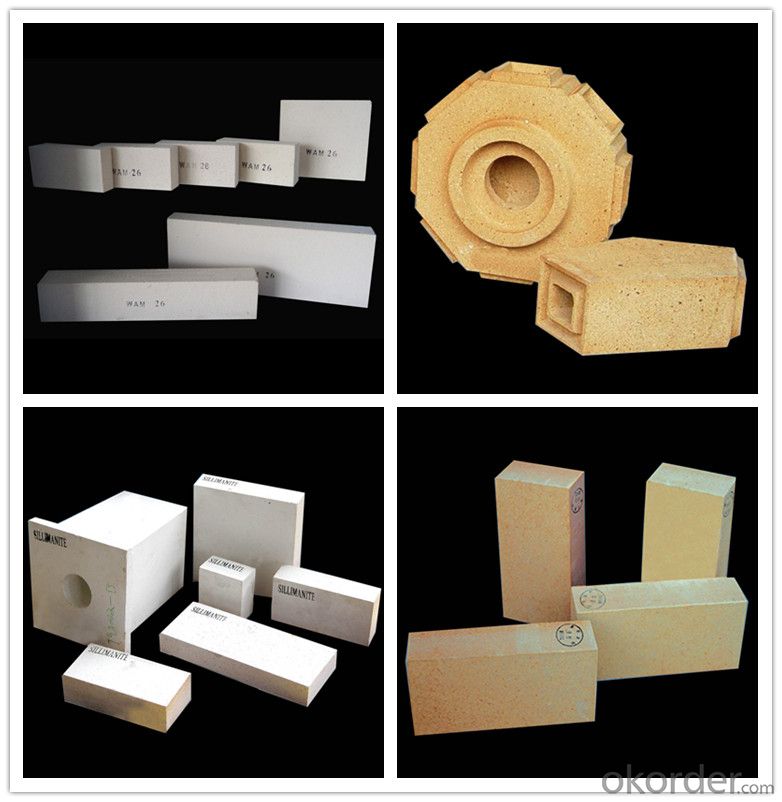
Produce Processing
Crushing
In this stage massive raw materials which have been stored, are ground and classified into proper sizes, making them easier to shape.
Mixing
The prescribed size of ground raw material is weighed and mixed into a designated amount of water and forming agent.
Shaping
The mixture is then poured into a mold to form shapes, and the pressure is high.
Drying
In this stage water is removed from the shaped bricks. This helps preventing the bricks from deforming or cracking which may result due to the rapid evaporation
Firing
This is the most crucial process in refractory manufacturing. The modeled bricks are fired at high temperature to complete their thermochemical reaction so that they do not deform.
Inspection
The bricks' physical and chemical properties are inspected very carefully by rigid quality management procedures.
Packing shipment
We guarantee efficient delivery every time.
Packing
We also supply (Click on following picture if interested):
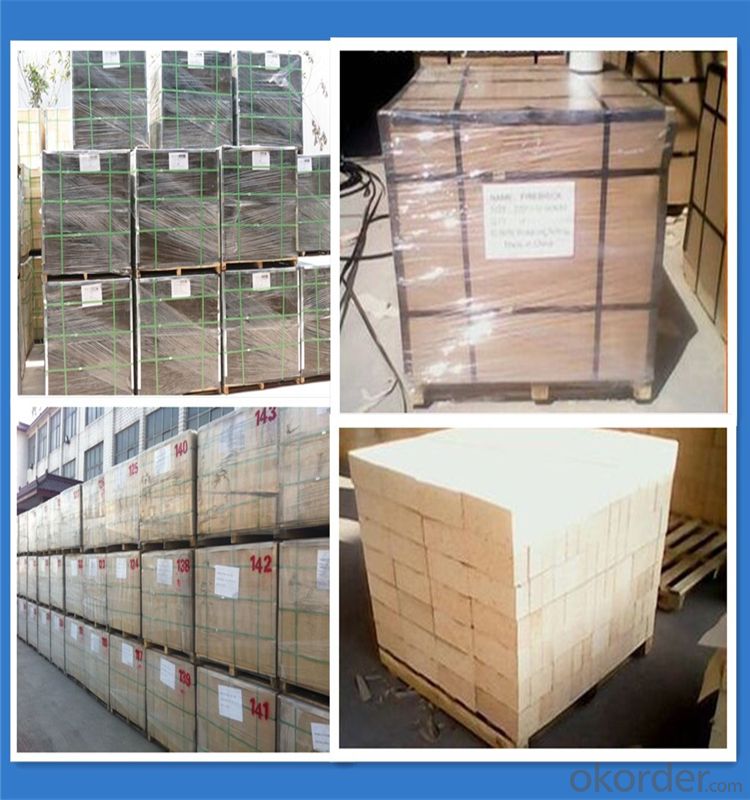
- Q: High alumina refractory bricks (Universal arc) weight for hot metal ladle
- Climbing, C23B ladle generally use T3 ladle bottom brick, brick wall with C23 package, C231 Some permanent layers are built from high alumina bricks, and some are built from castable refractory, T82, T43. Specific size can be checked according to the type of brick
- Q: Lining of refractory bricks in rotary furnace
- The lining now is built with MgO-C brick, the specific time to change it mainly to see the quality and usage of MgO-C brick. A few years ago, the mills are desperately seeking furnace age, some can use thirty thousand furnace, by the way, furnace age of converter refers to the number of steelmaking furnace not time. So now most mills are not simply pursuit furnace age, but economic furnace age, currently furnace age of steel mills around us is mostly in about ten thousand to twenty thousand. In general, the furnace service of the converter is arranged with the overhaul of other equipment. This can realize the synchronous maintenance of various equipment. If the stove is too old but the maintenance is not timely, also is not to replace the lining brick timely, there will be leakage, then the furnace shell and even ring will be damaged, consequences are more serious . The reason is very simple for brick falling off. One is the poor quality of furnace brick,causing brick lining loose, rocking furnace will lead lining brick falling. the other one is the furnace lining brick is pressed too tight in the use procedure and the brick is too thin.
- Q: what is consequence of high load and soft low of high alumina refractory brick ?
- softening, if not up to the design requirements, may cause vicious incident like the collapse of the stove in use. the full name is softening temperature under a fixed load, as the name suggests, it is the softening temperature after adding the load.
- Q: What kind of refractory brick is suitable for 24*28m rotary kiln of 5,000 tons?
- Magnesium spinel
- Q: Are sintered brick concrete bricks?
- Many kinds of brick, according to the raw materials used for clay brick, shale, coal gangue brick, fly ash brick, lime sand bricks and slag brick;According to the production process can be divided into sintered brick and non fired brick, in which non fired brick can be divided into compressed brick, steam brick and autoclaved brick;With or without holes, ordinary bricks, porous bricks and hollow bricks can be divided into ordinary bricks.
- Q: Can red bricks be burned in tunnel kiln which used to burn refractory brick?
- Of course. But the temperature to burn refractory brick is very high, the average temperature is above 1500 degrees. And the temperature to burn brick is not so high, about 1200 degrees. So you should control the temperature, the tunnel kiln to burn firebrick and the tunnel kiln to burn red brick are the same, there is just a little bit difference in the materials used to build the stove!
- Q: When the coal-fired steam boiler is built, it is necessary to build a common red brick between the refractory bricks. May I ask what is the requirement for this common red brick?
- The same the better, it will be easy to build
- Q: Can you direct the clay brick walls embryo
- Must not。 Not damp, damp, air tight, poor pressure bearing, bad adhesion between bricks and bricks
- Q: How to use the firebrick to build crucible furnace? How to calculate its furnace's width and depth?
- 1, classify according to the smelting method : Open-hearth?furnace steel: Including carbon and low-alloy steel. According to the different lining material, there are acidic and basic open hearth steel two types. Converter steel: Including carbon and low-alloy steel. According to different positions of blowing oxygen, there are bottom blowing, side blowing and BOF steel three types. Electric furnace steel: Mainly alloy steel. According to the different types of electric furnace and electric arc nail fixed Li modified cool boat to raise spending whale steel, induction furnace...
- Q: What are the differences and uses of non clay bricks, non clay bricks and ordinary red bricks?
- Just bricks without claySuch as foam hollow bricks, straw bricks, and some other cement bonded solid, hollow bricks and so on
Send your message to us
Fireclay Brick - Lightweight Insulation
- Loading Port:
- China main port
- Payment Terms:
- TT OR LC
- Min Order Qty:
- 100 kg
- Supply Capability:
- 2000000 kg/month
OKorder Service Pledge
OKorder Financial Service
Similar products
Hot products
Hot Searches
Related keywords
